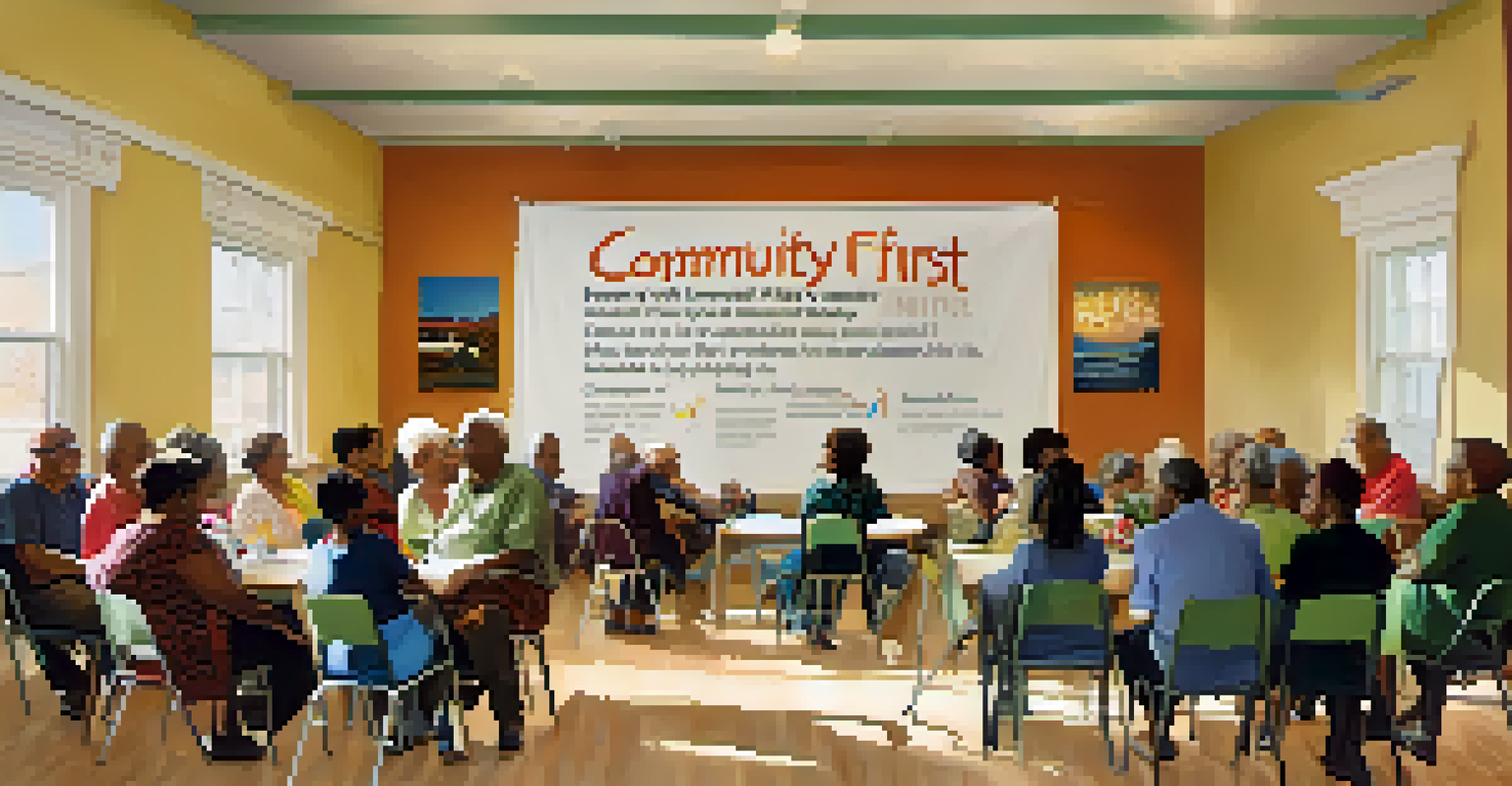Gentrification and Affordable Housing: A Growing Concern

Understanding Gentrification and Its Impact
Gentrification is a complex process that often transforms neighborhoods, attracting new residents and businesses while displacing long-time locals. At its core, it involves an influx of wealthier individuals into areas that were previously affordable. This can lead to rising property values and rents, making it challenging for existing residents to remain in their homes.
Gentrification is a complex process that often transforms neighborhoods, attracting new residents and businesses while displacing long-time locals.
The phenomenon is not just about physical changes; it also affects the community's cultural fabric. Traditional shops may be replaced by trendy cafes and boutiques, altering the character of the neighborhood. While some residents welcome these changes, others feel a sense of loss and disconnection from their roots.
Understanding gentrification requires looking at both its benefits and drawbacks. While it can lead to improved infrastructure and services, the displacement of low-income residents raises significant questions about equity and access. Balancing development with the needs of current residents is crucial for fostering inclusive communities.
The Affordable Housing Crisis Explained
The affordable housing crisis is a pressing issue in many urban areas, where low-income families struggle to find suitable homes. A combination of rising rents and stagnant wages has exacerbated the problem, leading to increased homelessness and housing instability. This crisis is particularly acute in gentrifying neighborhoods, where the cost of living can skyrocket overnight.

Affordability is often measured as a percentage of income spent on housing, with many experts recommending that no more than 30% of one’s income should go toward rent. However, in many cities, this benchmark is far from reality. Families are forced to make tough choices between housing and other essential needs, such as food and healthcare.
Gentrification Displaces Residents
The influx of wealthier individuals into affordable neighborhoods often leads to rising property values, displacing long-time residents.
Addressing the affordable housing crisis requires a multi-faceted approach. Solutions can include increasing the supply of affordable units, implementing rent control measures, and providing financial assistance to those in need. Policymakers, community organizations, and developers must work together to create viable options for all residents.
The Role of Policy in Gentrification
Policies play a critical role in shaping the dynamics of gentrification and affordable housing. Zoning laws, housing subsidies, and tax incentives can either encourage or mitigate gentrification. For instance, policies that promote mixed-income developments can help ensure that affordable housing remains available in rapidly changing neighborhoods.
Finding long-term solutions to the affordable housing crisis in gentrifying neighborhoods is essential for maintaining community stability.
On the other hand, insufficient regulations can lead to unchecked development and displacement. In some cases, cities may prioritize attracting businesses and investments over protecting existing residents. This often results in a lack of affordable housing options for those who are most vulnerable.
Ultimately, effective policy must balance growth with community needs. Engaging local residents in the decision-making process is vital to create solutions that reflect the community’s values and priorities. By fostering collaboration between various stakeholders, cities can work toward more equitable outcomes.
Community Resistance to Gentrification
As neighborhoods face the pressures of gentrification, many communities are rising to defend their homes and way of life. Grassroots organizations and residents have mobilized to advocate for policies that protect affordable housing and prevent displacement. This resistance often takes the form of protests, petitions, and community meetings aimed at raising awareness about the issue.
One powerful example is the emergence of tenant unions, which empower renters to collectively negotiate with landlords and advocate for their rights. These organizations provide a vital support network for those facing eviction or rent increases, fostering a sense of solidarity among residents. They remind us that communities can come together to fight for what they believe in.
Affordable Housing Crisis Deepens
Stagnant wages and rising rents in urban areas contribute to a severe affordable housing crisis, particularly in gentrifying neighborhoods.
Community resistance not only seeks to preserve existing neighborhoods but also to ensure that development is inclusive. By advocating for affordable housing initiatives and participatory planning processes, residents can help shape the future of their neighborhoods in a way that benefits everyone.
The Impact of Gentrification on Local Businesses
Local businesses are often at the front lines of gentrification, experiencing both challenges and opportunities as communities change. Some long-standing shops may struggle to compete with new, higher-end establishments that cater to wealthier residents. This can lead to a loss of unique character and cultural identity in the neighborhood.
Conversely, gentrification can also bring new customers and increased foot traffic, potentially benefiting some businesses. For example, a local coffee shop might thrive as new residents discover it. However, this benefit can be short-lived if rent increases force the business to close, highlighting the precarious nature of this dynamic.
To support local businesses during gentrification, it is essential to foster policies that encourage diversity and sustainability. Initiatives may include providing grants for small businesses, promoting local shopping campaigns, and safeguarding affordable commercial spaces. By investing in the local economy, cities can help ensure that businesses continue to serve their communities.
Long-Term Solutions for Affordable Housing
Finding long-term solutions to the affordable housing crisis in gentrifying neighborhoods is essential for maintaining community stability. Strategies may include increasing the construction of affordable housing units, utilizing public land for development, and incentivizing developers to include affordable options in their projects. Such approaches can help create more balanced neighborhoods that cater to diverse income levels.
Another effective solution is the implementation of land trusts, which allow communities to collectively own and manage land. This model can stabilize housing prices and keep homes affordable for future generations. By removing land from the speculative market, community land trusts empower residents and preserve local identities.
Community Resistance is Vital
Grassroots movements and tenant unions are essential in advocating for affordable housing and protecting residents from displacement.
Ultimately, the key to addressing the affordable housing crisis lies in collaboration between government, private sector, and community stakeholders. By prioritizing the needs of residents and ensuring their voices are heard, we can create inclusive neighborhoods that thrive for all.
The Future of Gentrification and Affordable Housing
As urban areas continue to evolve, the conversation around gentrification and affordable housing remains vital. The future will likely see a growing awareness of the need for equitable development practices that prioritize the needs of existing residents. Advocates are pushing for systemic changes that recognize housing as a human right and not merely a commodity.
Emerging trends, such as remote work and shifts in population dynamics, may also influence gentrification patterns. As more people seek affordable living options outside of traditional urban centers, some neighborhoods may experience a slowdown in gentrification. However, the underlying issues of housing affordability will persist and require ongoing attention.

Ultimately, the future of gentrification and affordable housing will depend on our collective commitment to fostering inclusive communities. By prioritizing collaboration, empathy, and innovation, we can work toward solutions that ensure everyone has a place to call home, regardless of their income.